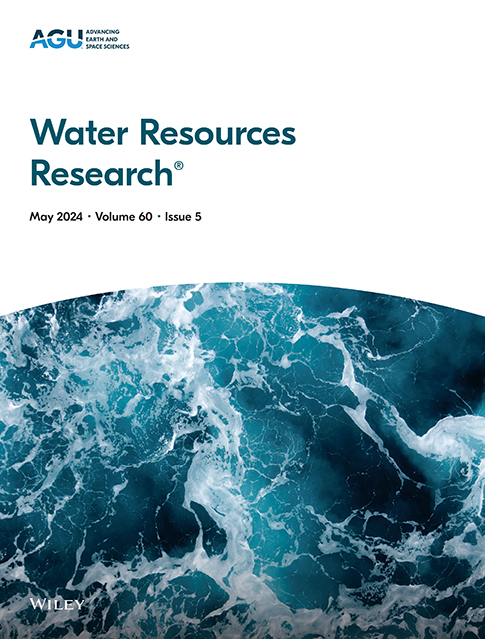Snow Distribution Patterns Revisited: A Physics-Based and Machine Learning Hybrid Approach to Snow Distribution Mapping in the Sub-Arctic
IF 4.6
1区 地球科学
Q2 ENVIRONMENTAL SCIENCES
引用次数: 0
Abstract
Snowpack distribution in Arctic and alpine landscapes often occurs in repeating, year-to-year patterns due to local topographic, weather, and vegetation characteristics. Previous studies have suggested that with years of observational data, these snow distribution patterns can be statistically integrated into a snow process modeling workflow. Recent advances in snow hydrology and machine learning (ML) have increased our ability to predict snowpack distribution using in-situ observations, remote sensing data sets, and simple landscape characteristics that can be easily obtained for most environments. Here, we propose a hybrid approach to couple a ML snow distribution pattern (MLSDP) map with a physics-based, snow process model. We trained a random forest ML algorithm on tens of thousands of snow survey observations from a subarctic study area on the Seward Peninsula, Alaska, collected during peak snow water equivalent (SWE). We validated hybrid model outputs using in-situ snow depth and SWE observations, as well as a light detection and ranging data set and a distributed temperature profiling sensor data set. When the hybrid results were compared with the physics-based method, the hybrid method more accurately depicted the spatial patterns of the snowpack, areas of drifting snow, and years when no in-situ observations were used in the random forest ML training data set. The hybrid method also showed improvements in root mean squared error at 61% of locations where time-series estimations of snow depth were observed. These results can be applied to any physics-based model to improve the snow distribution patterning to reflect observed conditions in high latitude and high elevation cold region environments.重新审视积雪分布模式:基于物理学和机器学习的亚北极地区积雪分布绘图混合方法
受当地地形、天气和植被特征的影响,北极和高山地貌的积雪分布经常出现年复一年的重复模式。以往的研究表明,通过多年的观测数据,这些积雪分布模式可以通过统计方法整合到积雪过程建模工作流程中。雪地水文学和机器学习(ML)领域的最新进展提高了我们利用现场观测、遥感数据集和简单地貌特征预测积雪分布的能力,这些特征在大多数环境中都很容易获得。在这里,我们提出了一种混合方法,将 ML 积雪分布模式(MLSDP)地图与基于物理学的积雪过程模型结合起来。我们对阿拉斯加苏厄德半岛亚北极研究区在雪水当量(SWE)峰值期间收集的数以万计的雪地调查观测数据进行了随机森林 ML 算法训练。我们利用现场雪深和 SWE 观测数据、光探测和测距数据集以及分布式温度剖面传感器数据集验证了混合模型的输出结果。将混合结果与基于物理的方法进行比较,混合方法更准确地描述了积雪的空间模式、飘雪区域以及随机森林 ML 训练数据集中未使用原位观测数据的年份。在观测到积雪深度时间序列估计值的 61% 的地点,混合方法的均方根误差也有所改善。这些结果可应用于任何基于物理的模型,以改进积雪分布模式,从而反映高纬度和高海拔寒冷地区环境中的观测条件。
本文章由计算机程序翻译,如有差异,请以英文原文为准。
求助全文
约1分钟内获得全文
求助全文
来源期刊

Water Resources Research
环境科学-湖沼学
CiteScore
8.80
自引率
13.00%
发文量
599
审稿时长
3.5 months
期刊介绍:
Water Resources Research (WRR) is an interdisciplinary journal that focuses on hydrology and water resources. It publishes original research in the natural and social sciences of water. It emphasizes the role of water in the Earth system, including physical, chemical, biological, and ecological processes in water resources research and management, including social, policy, and public health implications. It encompasses observational, experimental, theoretical, analytical, numerical, and data-driven approaches that advance the science of water and its management. Submissions are evaluated for their novelty, accuracy, significance, and broader implications of the findings.
文献相关原料
| 公司名称 | 产品信息 | 采购帮参考价格 |
|---|
 求助内容:
求助内容: 应助结果提醒方式:
应助结果提醒方式:


